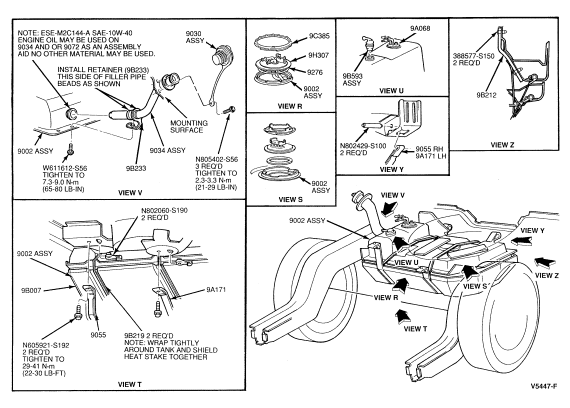
Section 10-01: Fuel Tank, Filter and Electric Fuel Pump | 1993 Mustang Workshop Manual |
Tools Required:
Removal
Vehicles with fuel injected engines have reservoirs inside the fuel tank to maintain fuel near the fuel pickup during vehicle cornering maneuvers and under low fuel operating conditions. These reservoirs could block siphon tubes or hoses from reaching the bottom of the fuel tank. This situation can be overcome with a few repeated attempts using different hose orientations.

Installation
 CAUTION: Ensure that fuel tank shields are installed with the straps and are
positioned correctly on the tank. Refer to the applicable system illustration.
CAUTION: Ensure that fuel tank shields are installed with the straps and are
positioned correctly on the tank. Refer to the applicable system illustration.
Install electric fuel pump as outlined.